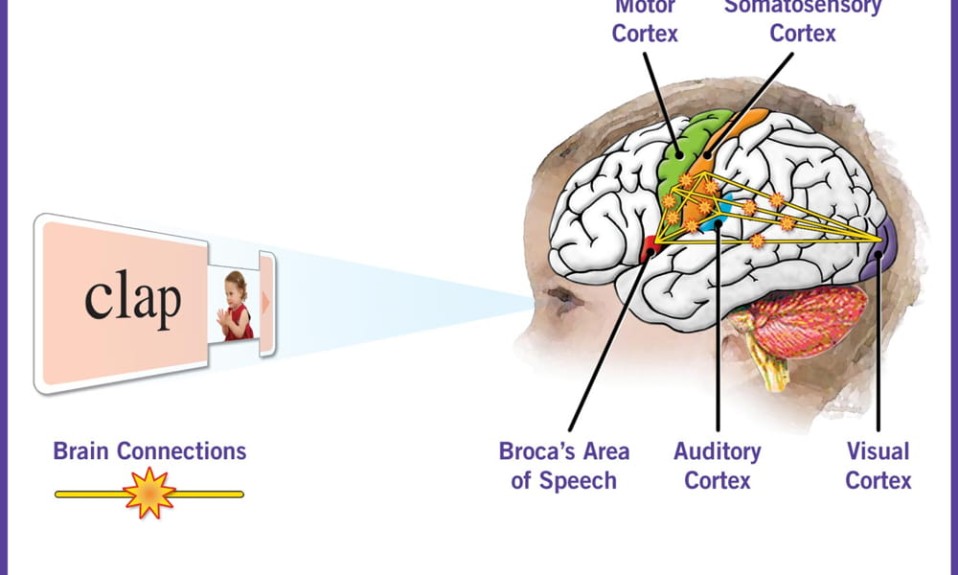In today’s increasingly globalized world, the ability to communicate in multiple languages has become an invaluable skill. As more families turn to homeschooling as an alternative to traditional education, the teaching and learning of foreign languages in a homeschool setting is gaining significant importance. Homeschooling multiple children can provide opportunities for collaborative learning and peer support in acquiring new languages. The growing interest in homeschooling can be attributed to various factors, such as the desire for personalized education, flexibility, and a tailored learning environment that caters to each child’s unique needs. As a result, parents are exploring ways to incorporate foreign language learning into their homeschool curriculums, recognizing the cognitive, social, and cultural benefits it offers.
Learning a foreign language not only expands a child’s linguistic abilities but also fosters critical thinking, creativity, and empathy. It opens up new horizons for children, exposing them to different cultures, histories, and perspectives. Moreover, being proficient in multiple languages can lead to enhanced career prospects and personal growth opportunities in the future. Additionally, homeschooling offers the flexibility to integrate subjects such as math with real-life experiences, promoting a deeper understanding of concepts and their practical applications.
Homeschooling provides a unique opportunity for parents to design a foreign language learning program that best suits their child’s interests, strengths, and learning style. Through individualized attention, customized teaching methods, and access to a wide array of resources, homeschooling offers an excellent platform for children to acquire and master foreign languages. Homeschooling also allows parents to incorporate engaging and hands-on science experiments and activities, fostering a deep understanding and appreciation for scientific concepts in a personalized and flexible learning environment.
In this article, we will explore the benefits of learning foreign languages in a homeschool setting, discuss the challenges parents may face, and provide strategies and resources to successfully teach foreign languages at home. By understanding the importance of foreign language education and implementing the right tools and techniques, homeschooling families can equip their children with the linguistic skills needed to thrive in an interconnected world.
Benefits of Learning Foreign Languages in a Homeschool Setting

Learning foreign languages at home, particularly in a homeschool setting, offers several advantages that can contribute to a more effective and enjoyable language learning experience. Some of the key benefits include personalized learning plans, flexible schedules, focused attention, and the freedom to explore a wide variety of electives beyond traditional classroom offerings.
Personalized Learning Plans
One of the primary advantages of homeschooling is the ability to create customized learning plans that cater to each child’s unique needs and interests. When it comes to foreign language learning, this means parents can select a language that aligns with their child’s passion, future goals, or family heritage. Similarly, in social studies, homeschooling allows parents to focus on specific historical events, cultures, or political systems that interest the child. Furthermore, the curriculum can be tailored to match the child’s learning style, strengths, and challenges. This personalized approach encourages children to stay motivated and engaged, leading to better retention and mastery of the language.
Flexible Schedules
Learning a foreign language requires consistent practice and exposure. Homeschooling allows for flexibility in scheduling, ensuring that language learning can be seamlessly integrated into daily routines. This flexibility enables parents and children to allocate time to language practice when the child is most alert and receptive. Moreover, it allows for adjustments in pacing, giving the child more time to grasp complex concepts or accelerating the learning process when the child is ready to move ahead.
Focused Attention
In a traditional classroom setting, teachers often have limited time to provide individualized attention to each student. In contrast, homeschooling allows parents to offer their children one-on-one instruction and support in their foreign language studies. This focused attention can lead to better understanding, faster progress, and increased confidence in their language abilities. Additionally, parents can closely monitor their child’s progress and provide immediate feedback, ensuring that any difficulties or misconceptions are addressed promptly.
Immersive Learning Experiences
Homeschooling families have the freedom to incorporate immersive learning experiences into their foreign language education, such as cooking traditional dishes, watching foreign films, or attending cultural events. These authentic experiences can help children develop a deeper understanding and appreciation of the language and culture they are studying.
Family Involvement
Homeschooling allows for greater family involvement in the child’s education, including foreign language learning. Siblings and parents can join in the language learning process, creating a supportive and collaborative learning environment. This not only enhances the child’s language skills but also strengthens family bonds and encourages lifelong learning as a shared family value.
Learning foreign languages in a homeschool setting offers numerous advantages that contribute to a more effective and enjoyable language learning experience. By leveraging personalized learning plans, flexible schedules, and focused attention, parents can create an optimal environment for their children to acquire and master new languages.
Common Challenges Faced By Homeschoolers in Teaching Foreign Languages

Teaching foreign languages in a homeschool setting can be a rewarding experience, but it also comes with its unique set of challenges. Some of the common difficulties homeschooling parents might face include lack of expertise, limited resources, and maintaining motivation.
Lack of Expertise
One of the primary challenges that homeschooling parents may encounter is the lack of expertise in the foreign language they wish to teach their children. Parents who are not fluent in the language themselves may struggle to teach complex grammar rules, proper pronunciation, and nuanced vocabulary. Additionally, a lack of cultural understanding and context can hinder the effectiveness of language instruction.
Limited Resources
While there are numerous resources available for teaching foreign languages, some homeschooling families may find it difficult to access or afford the best materials and tools. This challenge can be particularly pronounced for less commonly taught languages, where resources may be scarce or expensive. Furthermore, parents may need to invest additional time and effort in researching and selecting appropriate materials for their child’s age and skill level.
Maintaining Motivation
Keeping children motivated and engaged in language learning can be challenging, especially when progress may seem slow or difficult to measure. Children may lose interest or become frustrated if they feel overwhelmed by the complexity of the language or the demands of their learning schedule. As a result, parents need to find creative ways to maintain their child’s interest and enthusiasm in the language learning process.
Lack of Social Interaction
In a traditional school setting, students often have the opportunity to engage with their peers in language learning activities, such as group projects or conversation practice. In a homeschool setting, this type of social interaction may be limited, which can make it difficult for children to practice their speaking and listening skills in a natural context.
Assessing Progress
Evaluating a child’s progress in foreign language learning can be challenging for homeschooling parents, particularly if they are not fluent in the language themselves. Parents need to develop strategies for assessing their child’s skills and understanding, which may involve using external assessments, seeking the guidance of language experts, or joining homeschool support groups focused on foreign language learning.
Despite these challenges, homeschooling parents can still successfully teach foreign languages by seeking out appropriate resources, developing creative strategies to maintain motivation, and engaging in continuous learning themselves. Through perseverance and commitment, parents can provide their children with a valuable linguistic and cultural education that will serve them well throughout their lives.
Strategies For Teaching Foreign Languages at Home

To effectively teach foreign languages to their children in a homeschool setting, parents can employ a variety of practical strategies and techniques. Here are some suggestions to help parents create a successful language learning environment:
Choose a Suitable Language And Curriculum
Select a foreign language that aligns with your child’s interests, future goals, or family heritage. Research different curriculum options and teaching methodologies, such as immersion-based, grammar-focused, or communicative approaches, and choose one that best suits your child’s learning style and needs.
Set Clear Goals And Expectations
Establish clear short-term and long-term goals for your child’s language learning journey. This could include reaching a certain proficiency level, passing a language examination, or being able to engage in everyday conversations. Make sure your child understands these goals and is motivated to work towards them.
Create a Structured Learning Schedule
Design a consistent and structured learning schedule that includes daily or weekly language lessons, practice sessions, and review periods. Ensure that the schedule is flexible enough to accommodate your child’s other learning commitments and interests.
Use a Variety of Resources
Utilize a diverse range of resources to teach different language skills, such as textbooks, workbooks, online courses, apps, audio recordings, videos, and language learning websites. Incorporating various resources helps maintain interest and ensures that your child receives a well-rounded language education.
Engage in Immersive Activities
Include immersive language learning experiences in your homeschooling routine, such as watching foreign films or TV shows, listening to music or podcasts, reading books or articles, and attending cultural events. These activities help reinforce language skills and deepen your child’s understanding of the culture.
Encourage Regular Speaking Practice
Provide ample opportunities for your child to practice speaking the foreign language through role-playing, conversation practice with native speakers, language exchange programs, or online tutoring sessions. Speaking practice is crucial for developing fluency and confidence in using the language.
Connect With Language Communities
Join homeschooling groups, online forums, or language learning communities where parents and children can share resources, experiences, and support. These connections can be valuable in overcoming learning challenges and staying motivated.
Monitor Progress And Adjust The Curriculum
Regularly assess your child’s language proficiency and adjust the curriculum as needed to address any weaknesses or gaps in understanding. Use external assessments, self-assessments, or consult language experts to evaluate progress and make necessary adjustments.
Celebrate Achievements And Milestones
Acknowledge and celebrate your child’s language learning milestones, such as mastering a challenging grammar concept, completing a language course, or successfully engaging in a conversation. Recognizing achievements can boost motivation and confidence.
Be Patient And Persistent
Language learning takes time and effort, so be patient and persistent in your teaching approach. Encourage your child to embrace the learning process, and remind them that progress may be gradual but will eventually lead to success.
By incorporating these strategies and techniques, parents can create an effective and engaging language learning environment for their children in a homeschool setting. With dedication, support, and the right resources, children can successfully acquire and master foreign languages at home.
Online Resources And Tools For Language Learning

There are numerous online resources, tools, and apps available that can assist parents and children in teaching and learning foreign languages at home. These resources cater to different skill levels, learning styles, and language goals. Here is a list of some popular options:
Duolingo
A popular language learning app that offers gamified, interactive lessons in various languages. Duolingo uses a combination of reading, writing, listening, and speaking exercises to teach vocabulary, grammar, and sentence construction.
Rosetta Stone
A well-established language learning software that uses an immersion-based approach to teach languages. Rosetta Stone focuses on teaching vocabulary and grammar through context, images, and audio, helping learners develop their speaking, listening, reading, and writing skills.
Memrise
A language learning app that uses spaced repetition and mnemonic techniques to help users memorize vocabulary and phrases. Memrise offers courses in multiple languages, as well as user-generated content and community features.
Pimsleur
An audio-based language learning program that focuses on teaching conversational skills through listening and speaking exercises. Pimsleur uses a graduated interval recall method to reinforce vocabulary and grammar, making it ideal for auditory learners.
FluentU
A language learning platform that uses authentic video content, such as movie clips, commercials, and news segments, to teach languages in context. FluentU offers interactive captions, quizzes, and personalized learning pathways to help users improve their listening and reading comprehension.
iTalki
An online language tutoring platform that connects learners with native-speaking language teachers for one-on-one lessons. iTalki offers a wide range of languages and teachers, allowing users to find the perfect match for their learning needs and goals.
Anki
A flashcard app that uses spaced repetition to help users memorize vocabulary, grammar rules, and other language-related information. Anki is highly customizable, allowing users to create their flashcards or download pre-made decks shared by other learners.
HelloTalk
A language exchange app that connects users with native speakers of their target language for text and voice conversations. HelloTalk includes translation, transliteration, and correction features, making it easier for learners to engage in meaningful conversations with their language partners.
Mango Languages
An online language learning platform that offers self-paced courses in over 70 languages. Mango Languages focuses on teaching practical conversation skills, grammar, and culture through engaging lessons, interactive exercises, and audio recordings.
Quizlet
A study tool that allows users to create custom flashcards, quizzes, and games for various subjects, including foreign languages. Quizlet can be used to reinforce vocabulary, grammar concepts, and other language learning materials.
These online resources, tools, and apps can provide valuable support for teaching and learning foreign languages at home. By exploring different options and selecting resources that best align with their child’s learning style and goals, parents can create a comprehensive and engaging language learning experience for their children in a homeschool setting. Additionally, many of these resources offer free or affordable plans, making them accessible to homeschooling families with varying budgets.
Curriculum Options For Teaching Foreign Languages at Home

Homeschooling parents have a variety of curriculum options, methods, and approaches to choose from when teaching foreign languages. Selecting the right one will depend on factors such as the child’s learning style, language goals, and parental involvement. Here are some popular options to consider:
Immersion-Based Curriculum
This approach aims to replicate the natural language learning process by immersing the child in the target language. The curriculum focuses on learning vocabulary and grammar in context, using real-life situations, conversations, and authentic materials. Examples of immersion-based programs include Rosetta Stone and FluentU.
Grammar-Focused Curriculum
This approach emphasizes the explicit teaching of grammar rules and structures. Lessons are built around grammar concepts, with exercises and activities designed to reinforce understanding and application. Grammar-focused curricula are suitable for learners who prefer a structured and systematic approach to language learning. Examples include traditional textbooks and workbooks.
Communicative Approach
This method prioritizes the development of communication skills in the target language. The curriculum focuses on teaching functional language and authentic conversation through speaking and listening activities, role-plays, and interactive exercises. Examples of communicative approach resources include Pimsleur and iTalki.
Eclectic Approach
This approach allows parents to combine elements from different methods and curricula to create a personalized language learning experience tailored to their child’s needs and interests. Parents can mix and match resources, such as textbooks, online courses, apps, and tutoring sessions, to provide a well-rounded and engaging language education.
Classical Approach
This method is based on the classical education model, which emphasizes the study of Latin and Ancient Greek to develop critical thinking, logic, and language skills. Classical language curricula often include the study of grammar, translation, and literature. Examples of classical language resources include Memoria Press and Classical Academic Press.
Living Books Approach
This method focuses on learning languages through literature and authentic texts. Parents can use books, articles, and other written materials in the target language to teach vocabulary, grammar, and comprehension skills. This approach encourages a love for reading and helps learners develop an appreciation for the culture and history associated with the target language.
Online Courses And Platforms
Many online platforms offer comprehensive language courses designed for self-paced learning. These courses often include video lessons, interactive exercises, quizzes, and progress tracking features. Examples of online language learning platforms include Mango Languages, Babbel, and Coursera.
Tutors And Language Schools
Homeschooling parents can also opt to enlist the help of professional language tutors or enroll their children in language classes offered by local language schools or community centers. These options provide structured instruction, social interaction, and opportunities for real-life language practice.
By exploring these different curriculum options, methods, and approaches, homeschooling parents can find the most suitable and effective way to teach foreign languages to their children. The key is to consider the child’s learning preferences, goals, and abilities, and to be flexible and adaptive as their language skills grow and evolve.
Tips For Engaging Children in Foreign Language Learning

Keeping children engaged, motivated, and interested in learning a foreign language at home can be challenging. However, by incorporating various strategies, parents can create an enjoyable and stimulating learning environment. Here are some tips and ideas:
Set Realistic Goals
Establish achievable short-term and long-term goals for your child’s language learning journey. This helps children stay focused and motivated as they work towards a specific target.
Create a Routine
Design a structured and consistent learning schedule, integrating daily or weekly language lessons and practice sessions. This routine helps children develop good language learning habits and reinforces their skills.
Use Diverse Resources
Incorporate a variety of learning resources, such as textbooks, online courses, apps, videos, and audio recordings. This helps maintain interest and ensures a well-rounded language education.
Make Learning Fun And Interactive
Use games, puzzles, quizzes, and interactive activities to teach vocabulary, grammar, and other language concepts. This keeps children engaged and makes learning more enjoyable.
Encourage Peer Interaction
Connect with other homeschooling families or language learning communities, enabling children to practice speaking and listening skills with their peers. This provides social interaction and helps improve language fluency.
Include Cultural Activities
Integrate cultural activities, such as cooking traditional dishes, watching foreign films, or attending cultural events, to enhance your child’s understanding and appreciation of the language and its associated culture.
Reward Progress
Acknowledge and celebrate your child’s language learning milestones and achievements. This boosts motivation and instills a sense of accomplishment.
Personalize Learning
Tailor the learning experience to your child’s interests and preferences. For example, use topics they are passionate about or materials related to their hobbies to make language learning more relevant and engaging.
Encourage Self-Directed Learning
Empower your child to take charge of their language learning by providing opportunities for self-directed study, such as reading books, listening to podcasts, or watching videos in the target language.
Be Patient And Supportive
Language learning takes time and effort. Encourage your child to embrace the learning process and remind them that progress may be gradual but will eventually lead to success. Offer support, guidance, and encouragement throughout their language learning journey.
By incorporating these tips and ideas, parents can create a stimulating and enjoyable learning environment that keeps children engaged, motivated, and interested in learning a foreign language at home.
Assessing Progress in Foreign Language Learning

Assessing and tracking a child’s progress in learning a foreign language is essential to ensure they are developing the necessary skills and to identify areas that may require additional focus or support. Here are some strategies to help homeschooling parents assess and track their child’s language learning progress:
Set Clear Goals
Establish specific, measurable, achievable, relevant, and time-bound (SMART) goals for your child’s language learning journey. These goals can be related to vocabulary acquisition, grammar mastery, fluency, or communication skills. Having clear goals helps both parents and children monitor progress and stay focused on their language learning objectives.
Regularly Review And Evaluate Progress
Schedule periodic review sessions to evaluate your child’s progress towards their language learning goals. These reviews can help identify areas where your child may be struggling or excelling, allowing you to adjust the learning plan accordingly.
Use Assessment Tools
Utilize various assessment tools to gauge your child’s language proficiency, such as quizzes, tests, or worksheets. These tools can cover different language skills, including reading, writing, listening, and speaking. Some language learning resources, such as online courses and apps, also provide built-in assessment features to track progress.
Oral Assessments
Conduct regular oral assessments, such as conversation practice or presentations, to evaluate your child’s speaking and listening skills. These assessments can help identify pronunciation issues, fluency challenges, or gaps in vocabulary and grammar understanding.
Writing Assessments
Assign writing tasks, such as essays, journal entries, or creative writing projects, to assess your child’s written language skills. Review their work for grammar, vocabulary, sentence structure, and coherence.
Use External Assessments
Consider using standardized language proficiency tests, such as the Common European Framework of Reference for Languages (CEFR), the American Council on the Teaching of Foreign Languages (ACTFL) assessments, or language-specific exams like the DELE for Spanish or the DELF/DALF for French. These tests can provide an objective measure of your child’s language proficiency level.
Document Progress
Maintain a record of your child’s language learning journey, including completed lessons, assessment results, and notable achievements. This documentation can help you track progress over time and serve as a reference for future learning plans.
Seek Feedback From Language Experts
Consult with language tutors, teachers, or native speakers to obtain feedback on your child’s language skills and progress. This external input can provide valuable insights and help identify areas for improvement.
Encourage Self-Assessment
Teach your child to self-assess their language skills and progress. Encourage them to reflect on their learning experiences, identify challenges, and recognize their achievements. This self-assessment can foster a growth mindset and promote independent learning.
Adjust The Learning Plan
Based on the assessment results and progress tracking, adjust your child’s learning plan as needed. This may include revising goals, changing teaching methods, or incorporating new resources to address areas that require additional support.
By implementing these strategies, homeschooling parents can effectively assess and track their child’s progress in learning a foreign language. Regular assessment and monitoring ensure that the learning plan remains relevant, effective, and tailored to the child’s evolving needs and goals.
Conclusion
The importance of teaching foreign languages in a homeschool setting cannot be overstated. As the world becomes increasingly interconnected, the ability to communicate in multiple languages enhances cognitive, social, and cultural skills, while also expanding future opportunities for personal and professional growth. Homeschooling provides a unique platform for personalized language education, allowing parents to tailor their approach to their child’s interests, strengths, and learning style.
A wide array of strategies and resources are available to support homeschooling parents in teaching foreign languages successfully. These include various curriculum options, methods, and approaches, as well as an extensive range of online tools, apps, and platforms. By selecting the most suitable resources and employing effective teaching strategies, parents can create an engaging and stimulating language learning environment that keeps children motivated and interested.
Moreover, assessing and tracking a child’s progress is essential to ensure a successful language learning journey. By setting clear goals, monitoring progress, and adjusting the learning plan accordingly, parents can help their children achieve their language learning objectives.
With dedication, support, and the right resources, homeschooling parents have the potential to provide their children with a valuable linguistic and cultural education. By fostering a love for language learning and equipping their children with the necessary skills, parents can empower their children to thrive in an increasingly globalized world.











